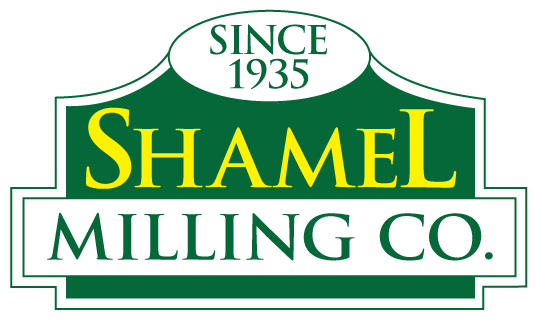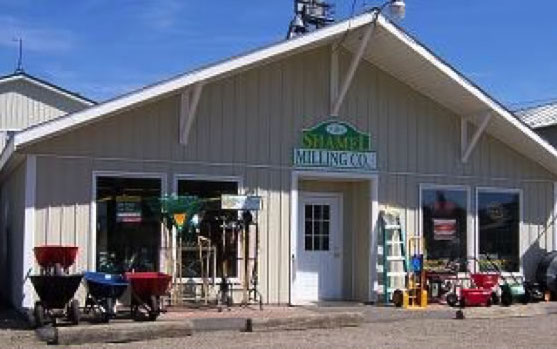
“The Biggest Little Feed & Farm Supply in Town!”
Bulk Food Plot Seeds
Shamel Milling offers a full line of Bulk Food Plot Seeds from Preferred Seed. We believe in providing our customers with quality seed mixes that perform in the Western New York climate and soils.
Seed mixes listed below may be stocked in our warehouse during the appropriate planting seasons. It is recommended that you give us a call to place an order at least two weeks ahead of when you will need the seed. If what you are looking for is not on the list below or you need more information, give us a call 716-592-7700 or send and e-mail, bobengel@shamelmilling.com OR jasonengel@shamelmilling.com, and let us find what you’re looking for.
CLICK ON A THE TYPE OF SEED FOR MORE INFORMATION
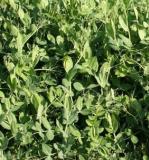
Austrian Winter Peas
Austrian winter peas are closely related to garden peas. They can grow to lengths of 5 feet or more if planted in fertile soils. Winter peas create reddish purple blooms which resemble sweet peas. When compared to other winter legumes, The Austrian winter pea is a superior soil improvement / soil building crop. It tends to produce greater tonnage matter per acre and will even continue to grow through colder months. This extra growth yields a large amount of organic matter that can be turned under in the spring.
PLANTING GUIDE
Planting Guide:
-Seeding Rate (Alone/Acre): 30 – 40 lbs.
-Seeding Depth(Inches): 1.5 – 2
– Life Cycle: Annual
-Seeding Dates: Northern – August to September

Buckwheat
A fast establishing annual cover crop which is excellent for replenishing nitrogen in soils.
PLANTING GUIDE
-Seeding Rate (Alone/Acre): 45 – 65 lbs. (Nurse Crop/Acre): 10-25 lbs.
-Seeding Depth(Inches): 1.5 – 2
-Life Cycle: Annual
-Seeding Dates: Northern – June to July
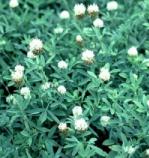
BERSEEM
Berseem Clover is used for forage and it can be green-chopped, grazed, or used for silage and by all measures its quality is excellent. It can also be used as green manure or for renovating old clover or alfalfa stands, and as a “break crop” in rotations, for disrupting weed and other pests’ life cycles. It is very tolerant of close mowing and can be mowed several times for forage and then plowed under as green manure yielding approximately 30 to 60 pounds per acre of nitrogen.
PLANTING GUIDE
– Seeding Rate (Alone/Acre): 10 – 20 lbs.
-Seeding Depth(Inches): .1 – .25
-Life Cycle: Annual
-Seeding Dates: Northern – Spring or Late Fall
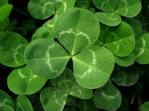
PLANTING GUIDE
SEEDING RATE ALONE / ACRE………………6 – 8 lbs.
SEEDING RATE IN MIX / ACRE…………………..2 lbs.
SEEDING DATES ……………..Feb-May, Late Summer
SEEDING DEPTH …………………………….1/4-1/2 inch
SEEDING METHOD . ………..Any conventional seeder
DAYS TO GERMINATE ……………………………10 – 14
AVERAGE SEEDS PER LB ……………………..750,000
EASE OF ESTABLISHMENT ………………….Excellent
LIFE CYCLE ………………………………………Perennial
LEGUME COMPATIBILITY……………………………Fair
SEED TREATMENT ………………………………..Dormal
AGRONOMIC CHARACTERISTICS
FORAGE YIELD …………………………….Excellent
FORAGE QUALITY ………………………..Excellent
MATURITY……………………………………..Medium
PERSISTENCE ……………………………..Excellent
PALATABILITY ……………………………..Excellent
GROWING HABIT …………………………….Stolons
DROUGHT TOLERANCE ………………………Good
MOISTURE TOLERANCE…………………………Fair
LOW PH TOLERANCE ……………………………Fair
HAY ………………………………………………….Good
SILAGE………………………………………………..Fair
PASTURE ……………………………………..Excellent
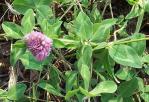
Medium Red Clover
Red Clover is grown throughout the Northeastern states and eastern Canada for forage (hay, silage, pasture), as well as in rotation for soil improvement. It was first introduced into America about 1650, and was the most widely grown forage legume in the northeast prior to the 1900’s.
Most red clovers grown in the northeast are of the early flowering types, known collectively as medium red clovers. Mammoth red clover, the late flowering type, generally produces one cutting per year plus an aftermath, and is seldom grown for forage.

Corn
Round Up Ready and Conventional (non Round Up) varieties are available. Varieties change yearly. Please call our office for more details and availability. (716)-592-7700

Grain Sorghum
Grain Sorghum can make a great habitat for upland game birds such as turkey, ducks, quail, and pheasants due to the seed and cover it produces. Small game animals such as rabbits can also make use of the sorghum using it as cover as well as foraging on the foliage. Not only can Grain Sorghum be used by itself, it also makes a great structure plant for use in plots with viney beans or peas (cow peas, soybeans, forage peas, etc).
Planting Guide:
-Seeding Rate (Alone/Acre): 10 – 15 lbs.
-Seeding Depth (Inches): 1.5 – 2
-Life Cycle: Annual
-Seeding Dates: Northern – May to June

Egyptian Wheat
Egyptian Wheat is a member of the Sorghum family. Known for its extreme height and excellent screening cover. This plant can reach 8′-12′ tall and when planted in 15-30′ swaths across open areas, it can serve as corridors for deer movement in as little as 45-50 days. Ideal cover and feed for dove, quail, pheasant, turkey and ducks.
Planting Guide:
-Seeding Rate (Alone/Acre): 20 – 30 lbs.
-Seeding Depth(Inches): .5 – .75 inches
-Life Cycle: Annual
-Seeding Dates: Northern – May 1 to June 30 when ground temperatures reach 60 degrees.
– Planting Method: Drilled, No-Till Drill, or Broadcast Seeded into firm surface and then cultipacked.
– Fertilizer: Apply according to test results OR 50-100 pounds Nitrogen per acre.
– Maturity 110 Days.
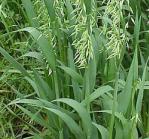
Oats
Forage Oats
Forage Oats are an annual crop used for quick forage yields and are a good source of grain. Oats tend to have excellent quality for forage. They are used for quick forage in the fall or for forage or grain in the spring. They can grow anywhere from 2 – 4 feet tall and are generally more productive and have wider leaves than other smaller grains. The plants will survive until temperatures remain under 20 degrees for several hours.
Planting Guide:
-Seeding Rate (Alone/Acre): 80 – 140 lbs.
-Seeding Depth(Inches): 1 – 2
-Life Cycle: Annual
-Seeding Dates: Northern – April to September
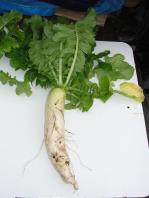
Radishes
Ground Hog
Forage radish is a unique fall/winter cover crop that is relatively new to the Northeast region. Forage radish is also known as “Daikon” radish. When planted by early to mid August in the Northeast, forgage radish exhibits a number of unique and desirable characteristics that distinguish it from other typres of cover crop more commonly grown in the region.
– Alleviate soil compaction.
– Increase water filtration.
– Suppress weeds and build organic matter.
– Control erosion and reduce runnoff.
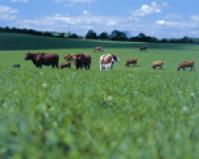
Rye Grass
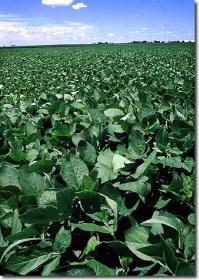
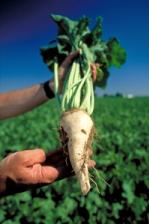
Sugar Beets
Sugar Beets are taproot plants that store sugar reserves in the root and produce tall green leafy foliage above the surface. Although primarily used for production of sucrose sugar beets also can be used in wildlife food plots and for livestock grazing. The beet tops are what are primarily consumed by deer and livestock. The tops contain about 52% percent digestible dry matter of which 13% percent is crude protein although deer will dig up and consume the root of the plant. It is the protein and energy content that sugar beets offer that attracts deer.
Planting Guide
– Seeding Rate (Alone/Acre): 8 – 10 lbs.
– Seeding Depth(Inches): .5 – 1.5
– Life Cycle: Annual
– Seeding Dates: – Northern: April 1 – June 1
– Southern: Feb. 1 – April 1
Sept. 15 – Oct. 15
Triticale
Triticale is a highly versatile forage for grazing, silage, balage, and boot-stage hay. Triticale is a cross between wheat and rye. It is excellent forage for dairy cows at the boot-stage and for beef cows and dairy heifers at the soft dough stage. High protein, digestiblity, and significantly higher yields than other boot-stage cereal grains.
Planting Guide:
– Seeding Rate (Alone/Acre): 2 – 3 bu.(52 lbs./ bu.)
– Seeding Depth(Inches): 1 – 2
– Life Cycle: Annual
– Seeding Dates: Northern – April to May
Turnips

Appin TurnipZ
A high yielding, high quality variety bred to give multiple grazings of high quality forage throughout the growing season. Unlike transitional turnips, the appin bulb has 6 to 10 growing points on top of the bulb allowing for more leaves and better regrowth, and therefore, multiple grazings. Appin can be grown with oats, annual or Italian ryegrass, sorghum-sudan grass, cereal rye and other grasses.
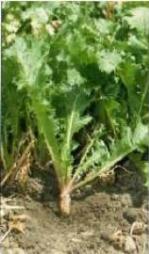
Pasja Turnip
Pasja Hybrid Forage Turnip is an early maturing hybrid forage brassica that is a cross between a forage turnip and a forage rape. It has been bred for rapid growth and high performance with a high leave to bulb ratio. It can be used over a longer period of time then traditional rape. It has excellent re-growth ability and provides good highly palatable and attractive leafy food source to deer. Can also be planted in the late summer and used for late fall forage. Deer are attracted to the green leaves of the turnip but will also dig up and eat the bulb itself long after the crop is gone and even after heavy snow. Pasja works well to plant for summer forage to pattern deer to food plot areas that will be planted and hunted during the hunting season.
Planting Guide:
– Seeding Rate (Alone/Acre): 1 – 4 lbs.
– Seeding Rate (In Mix/Acre): 1 lb.
– Seeding Depth(Inches): 0.25 – 0.5
– Life Cycle: Annual
– Seeding Dates: Northern – Early Spring or Mid August – Late Summer
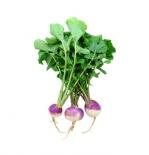
Planting Guide:
– Seeding Rate (Alone/Acre): 1 – 4 lbs.
– Seeding Rate (In Mix/Acre): 1 lb.
– Seeding Depth(Inches): 0.25 – 0.5
– Life Cycle: Annual
– Seeding Dates: Northern – Early Spring or Mid August – Late Summer
Purple Top Turnip
Purple Top Turnips produce a hearty forage for deer. They produce high protein leafy greens that are highly palatable and digestible forage for deer. They also grow a root bulb that can range in diameter from 2 – 5 inches. Smaller size turnips remain sweet and tender and are therefore a desirable food source for deer. Cool temperatures also help enhance the taste of the turnip making purple top turnips great for hunting season food plots that can be planted in mid to late summer and provide forage into the winter months. Deer will graze on the greens and leave the turnip underground untouched as a sort of food reserve and will return once the greens are gone and even after snow fall and will dig through the snow and dig up and eat the turnip providing an important high energy winter food source.
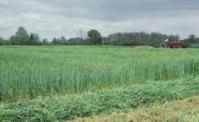
Winter Wheat
Contact us
Phone: 716-592-7700
Open Hours
Mon-Fri: 8:30am - 5pm
Saturday 8:30am-2pm
Closed Sunday
Copyright © 2023 Shamel Milling Co. East Concord, NY
~ All rights reserved. No use of text or images without express permission. ~
